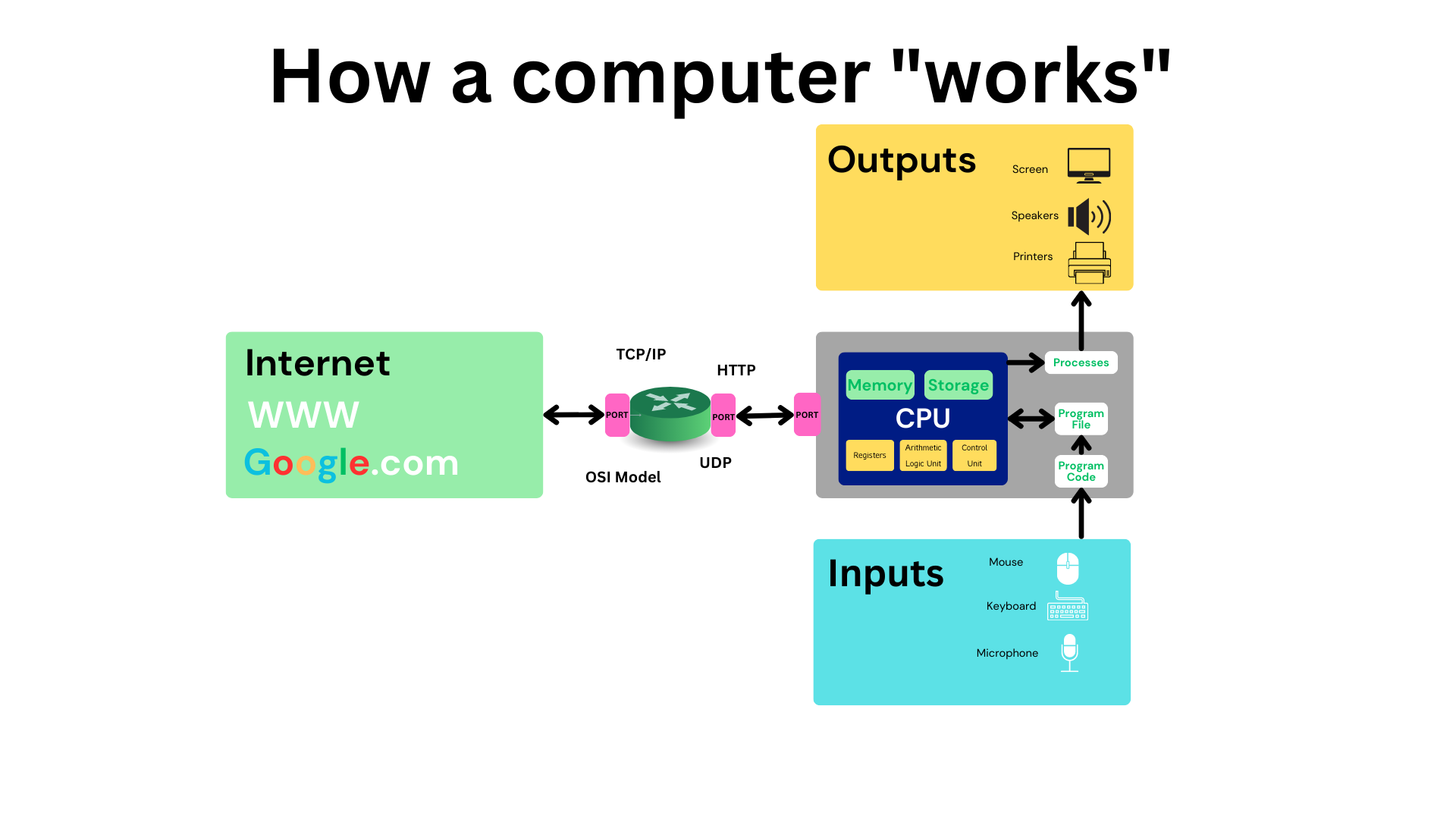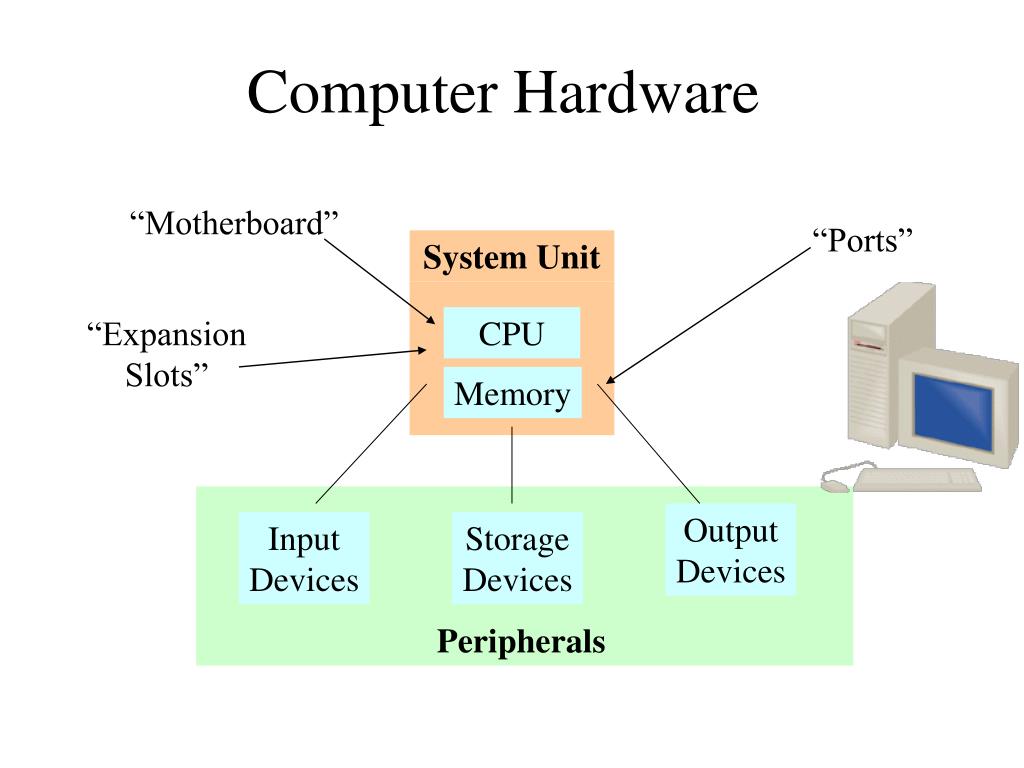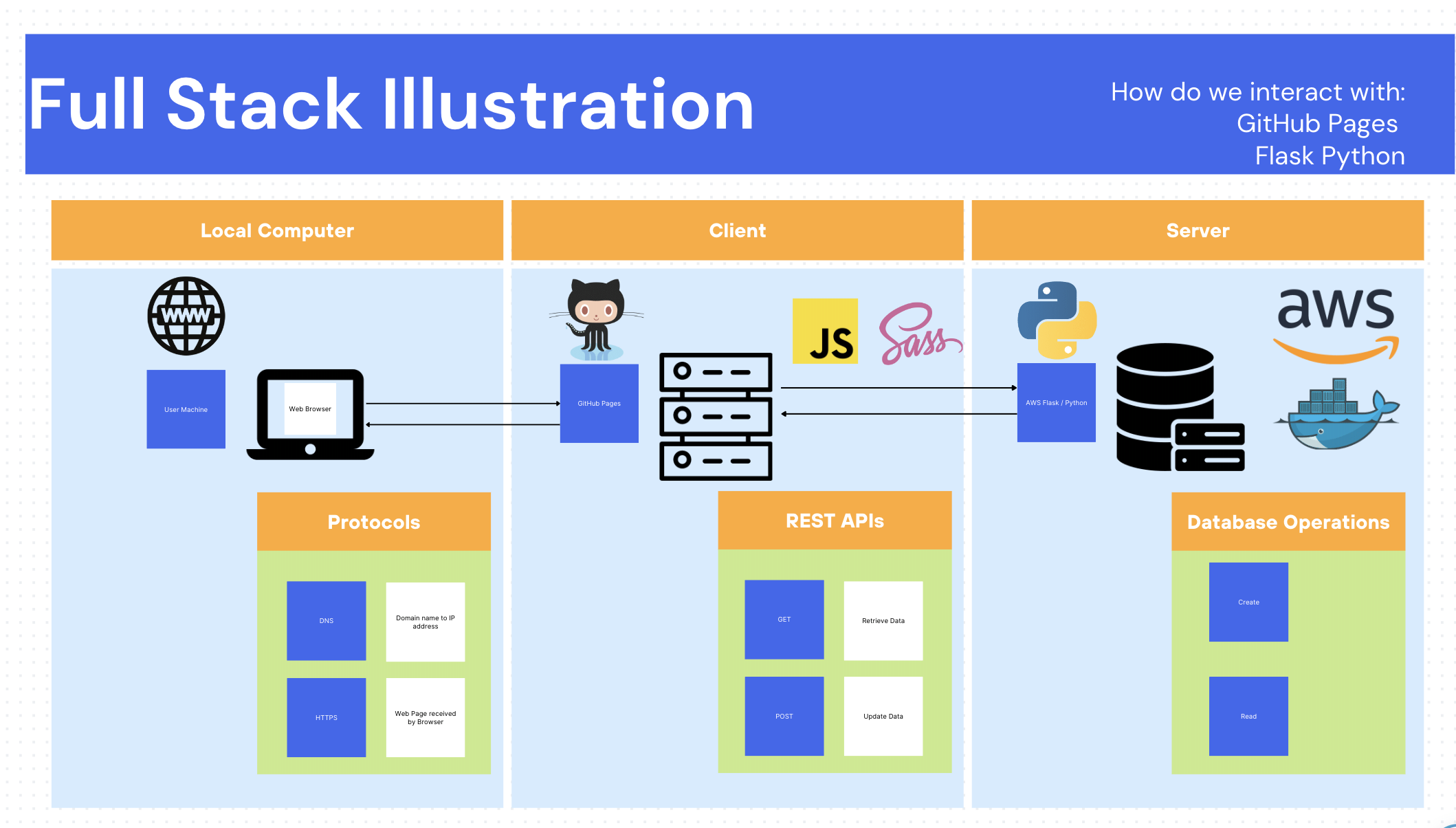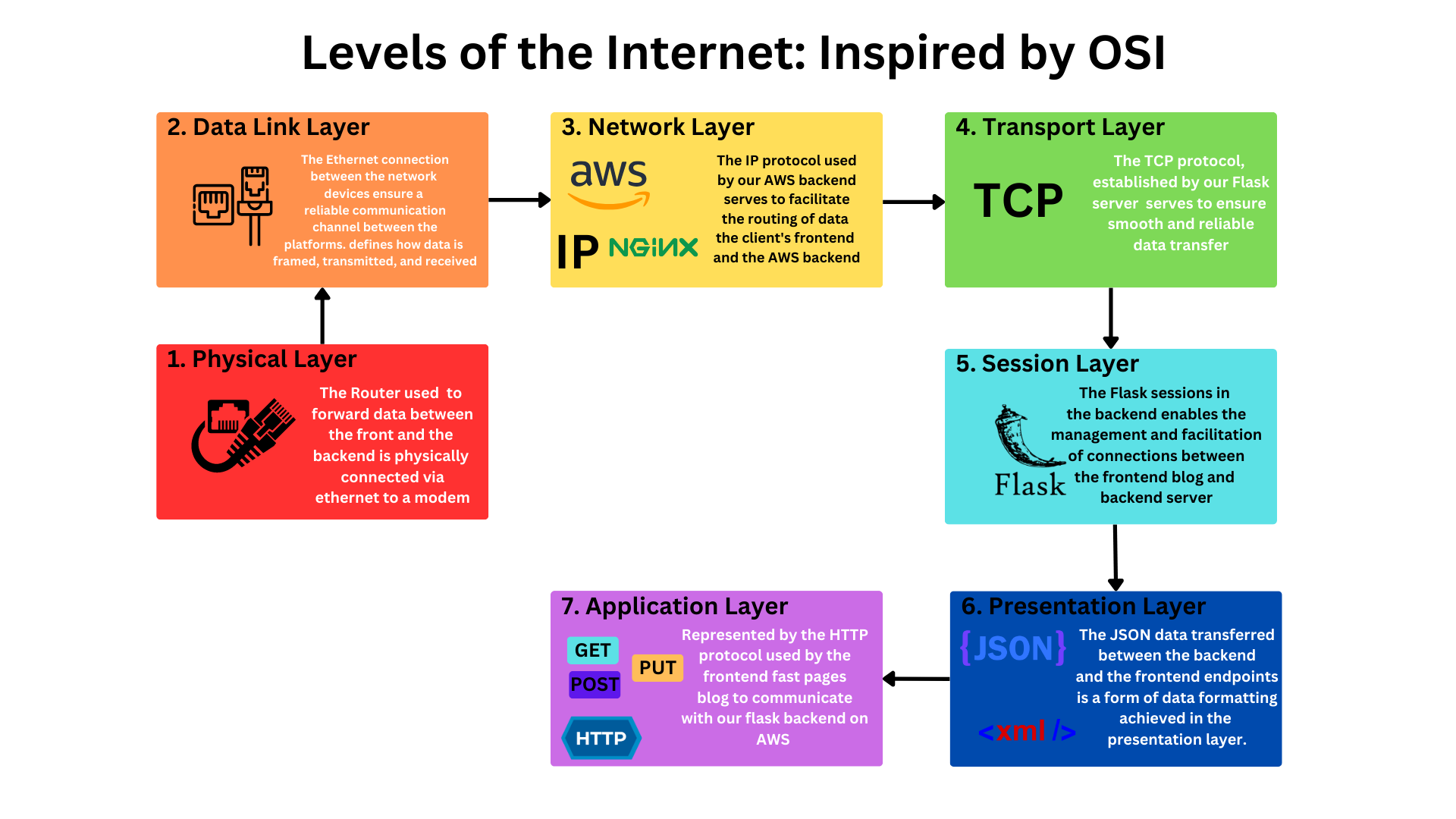Computers and Networks (Unit 4)
Add Definitions from Unit 4 Computer Systems and Networks
Requirements
Work through College Board Unit 4… blog, add definitions, and pictures. Be creative, for instance make a story of Computing and Networks that is related to your PBL experiences this year.
How a Computer Works
As we have learned, a computer needs aa program to do something smart. The sequence of a program initiates a series of actions with the computers Central Processing Unit (CPU). This component is essentially a binary machine focussing on program instructions provided. The CPU retrieives and stores the data it acts upon in Random Access Memory (RAM). Between the CPU, RAM, and Storage Devices a computer can work with many programs and large amounts of data.
List specification of your Computer, or Computers if working as Pair/Trio
- Processor GHz: 1.80GHz
- Memory in GB: 16GB
- Storage in GB: 447 Gb
- OS: Microsoft Windows 10 Home
Define or describe usage of Computer using Computer Programs. Pictures are preferred over a lot of text. Use your experience.
- Input devices - Physical devices used to provide user and control input to a computing device. This can contain physical data capture by microphones, keyboards, mouse, and etc.
- Output devices - Physical devices used to output the computed result generated by the computer. This can come in the form of audio through speakers, text through screens, and physically through printers amongst other mediums
- Program File - A digital file that contains program code to be run on the computer. Where the instructions are stored.
- Program Code - The instructions for a computer to process and execute. Essentially tells the computer the necessary steps to properly complete a task,
- Processes - A certain task that is currently in action on a computer. The process represents a particular instance of a running program, which may be executed over multiple threads.
- Ports - A virtual endpoint in most computing devices that allow for network connections to and from the computer. These ports usually have numbers assigned to them, which many services and protocols typically rely on. They serve as interfaces between the computer and other devices
- Data File - A file that stores information and data to be used by the computer either for storage, displaying, or other purposes.
- Inspect Running Code - Allows us to see the current function calls and instantiated objects of a program
- Inspect Variables - Allows us to see what variables are defined and their respective values during run time.


The Internet
Watch/review College Board Daily Video for 4.1.1
- Essential Knowledge
- A computing device is a physical artifact that can run a program. Some examples include computers, tablets, servers, routers, and smart sensors.
- A computing system is a group of computing devices and programs working together for a common purpose.
- A computer network is a group of interconnected computing devices capable of sending or receiving data.
- A computer network is a type of computing system.
- A path between two computing devices on a computer network (a sender and a receiver) is a sequence of directly connected computing devices that begins at the sender and ends at the receiver.
- Routing is the process of finding a path from sender to receiver.
- The bandwidth of a computer network is the maximum amount of data that can be sent in a fixed amount of time.
- Bandwidth is usually measured in bits per second
- Complete Vocabulary Matching Activity. Incorporate this into your learnings from year. To analyze measure path and latency use
tracerouteandpingcommands from Linux Terminal.- Path - Any sequence of connected computing devices starting from the sender and ending at the receiver.
- Route - A path between a sender device and the receiver device.
- Computer System - A group of computing devices and programs working together for a common purpose
- Computer Device - A physical artifact that is capable of running a program. Examples include computers, tablets, phones, servers, routers, and smart sensors.
- Bandwidth - The rate at which data can be transferred over a connection over an interval of time
- Computer Network - A grou pof interconnected computing devices that can send and receive data from one another.
Watch/review College Board Daily Video 4.1.2
- Complete True of False Questions
- True, open standards and protocols ensure that all manufacturers and developers could build hardware and software that can communicate with others so long as they follow the rules established
- False, The role of the IETF is to ensure that the internet is an open and collaborative space. They manage the development of open, standard protocols.
- False, Routes are not determined statically, but instead dynamically. Protocols such as OSPF and RIP serve to generate routing routes for networks.
- True, protocols specify the formatting and rules that facillitates the effective use of a system.
- False, Although UDP is faster, it does not guarantee transfers as certain packets might be lost in the process
- Flase, The World Wide Web is not the internet. It is only a part of the internet that contains a selection of webpages.
- True, HTTP is a protocol used by the World Wide Web in order to transfer data back and forth
- Essential Knowledge
- The internet is a computer network consisting of interconnected networks that use standardized, open (nonproprierary) communication protocols.
- Access to the internet depends on the ability to connect a computing device to an internet connected device.
- A protocol is an agreed-upon set of rules that specify the behavior of a system.
- The protocols used in the internet are open, which allows users to easily connect additional computing devices to the internet.
- Routing on the internet is usually dynamic; it is not specified in advance
- The scalability of a system is the capacity for the system to change in size and scale to meet new demands.
- The internet was designed to be scalable
- Information is passed through the internet as a data stream. Data streams contain chunks of data, which are encapsulated in packets.
- Packets contain a chunk of data and metadata used for routing the packet between the origin and the destination on the internet, as well as for data reassembly.
- Packets may arrive at the destination in order, out of order, or not at all
- IP, TCP and UDP are common protocols used on the internet.
- The world wide web is a system of linked pages, programs, and files.
- HTTP is a protocol used by the world wide web
- The world wide web uses the internet
- Go over AP videos, vocabulary, and essential knowledge. Draw a diagram showing the internet and its many levels. A preferred diagram would using your knowledge of frontend, backend, deployment, etc. Picture would highligh vocabulary by illustration. The below illustration have some ideas


- Often we draw pictures of machines communicating over the Internet with arrows. However, the real communication goes through protocol layers and the machine and then is trasported of the network. For College Board and future Computer Knowledge you should become familiar with the following …
User Machine <---> Frontend Server <---> Backend Server
+-----------+ +-----------+ +-----------+
| Browser | | GH Page | | Flask |
+-----------+ ^ +-----------+ ^ +-----------+
| HTTP | | | HTTP | | | HTTP |
+-----------+ | +-----------+ | +-----------+
| TCP | | | TCP | | | TCP |
+-----------+ | +-----------+ | +-----------+
| IP | V | IP | V | IP |
+-----------+ +-----------+ +-----------+
| Network | <---> | Network | <---> | Network |
+-----------+ +-----------+ +-----------+
The “http” layer is an application layer protocol in the TCP/IP stack, used for communication between web browsers and web servers. It is the protocol used for transmitting data over the World Wide Web.
The “transport” layer (TCP) is responsible for providing reliable data transfer between applications running on different hosts. The TCP protocol segments the data into smaller chunks called “segments”. Each segment contains a sequence number that identifies its position in the original stream of data, as well as other control information such as source and destination port numbers, and checksums for error detection.
The “ip” layer is responsible for packetizing data received from the TCP layer of the protocol stack, and then encapsulating the data into IP packets. The IP packets are then sent to the lower layers of the protocol stack for transmission over the network.
The “network” layer is responsible for routing data packets between networks using the Internet Protocol (IP). This layer handles tasks such as packet addressing and routing, fragmentation and reassembly, and network congestion control.
Fault Tolerance
Watch both Daily videos for 4.2
- Complete the network activity, summarize your understanding of fault tolerance.
Fault tolerance for a network means being able to properly function and facillitate communication and connections between devices even if certain connnections are harmed or deemed unsuable. Fault tolerance in a network is typically implemented through network redundancy, which is when there exists multiple paths from one device to another device in the network. Redundancy ensures that in the case that one or multiple paths to a certain device is destroyed, there still exists other paths that packets can be sent along, ensuring that the ability to communicate within a network is preserved.
Parallel and Distributed Computing
Review previous lecture on Parallel Computing and watch Daily vidoe 4.3. Think of ways to make something in you team project to utilize Cores more effectively. Here are some thoughts to add to your story of Computers and Networks…
-
What is naturally Distributed in Frontend/Backend archeticture?
The number of clients is distributed in the frontend/backend archetecture as the site contains may algorithms and scripts run on the frontend sites, which is run on the client’s computer
-
Analyze this command in Docker:
ENV GUNICORN_CMD_ARGS="--workers=1 --bind=0.0.0.0:8086". Determine if there is options are options in this command for parallel computing within the server that runs python/gunicorn. Here is an article- The number of workers in this command specifies options for parallel computing. This allows for more processes to handle HTTP requests from the server.
Last week we discussed parallel computing on local machine. There are many options. Here is something to get parallel computing work with a tool called Ray.
- Review this article… Can you get parallel code on images to work more effectively? I have not tried Ray.
- Code example from ChatGPT using squares. This might be more interesting if nums we generated to be a lot bigger.
import ray
# define a simple function that takes a number and returns its square
def square(x):
return x * x
# initialize Ray
ray.init()
# create a remote function that squares a list of numbers in parallel
@ray.remote
def square_list(nums):
return [square(num) for num in nums]
# define a list of numbers to square
nums = [1, 2, 3, 4, 5]
# split the list into two parts
split_idx = len(nums) // 2
part1, part2 = nums[:split_idx], nums[split_idx:]
# call the remote function in parallel on the two parts
part1_result = square_list.remote(part1)
part2_result = square_list.remote(part2)
# get the results and combine them
result = ray.get(part1_result) + ray.get(part2_result)
# print the result
print(result)